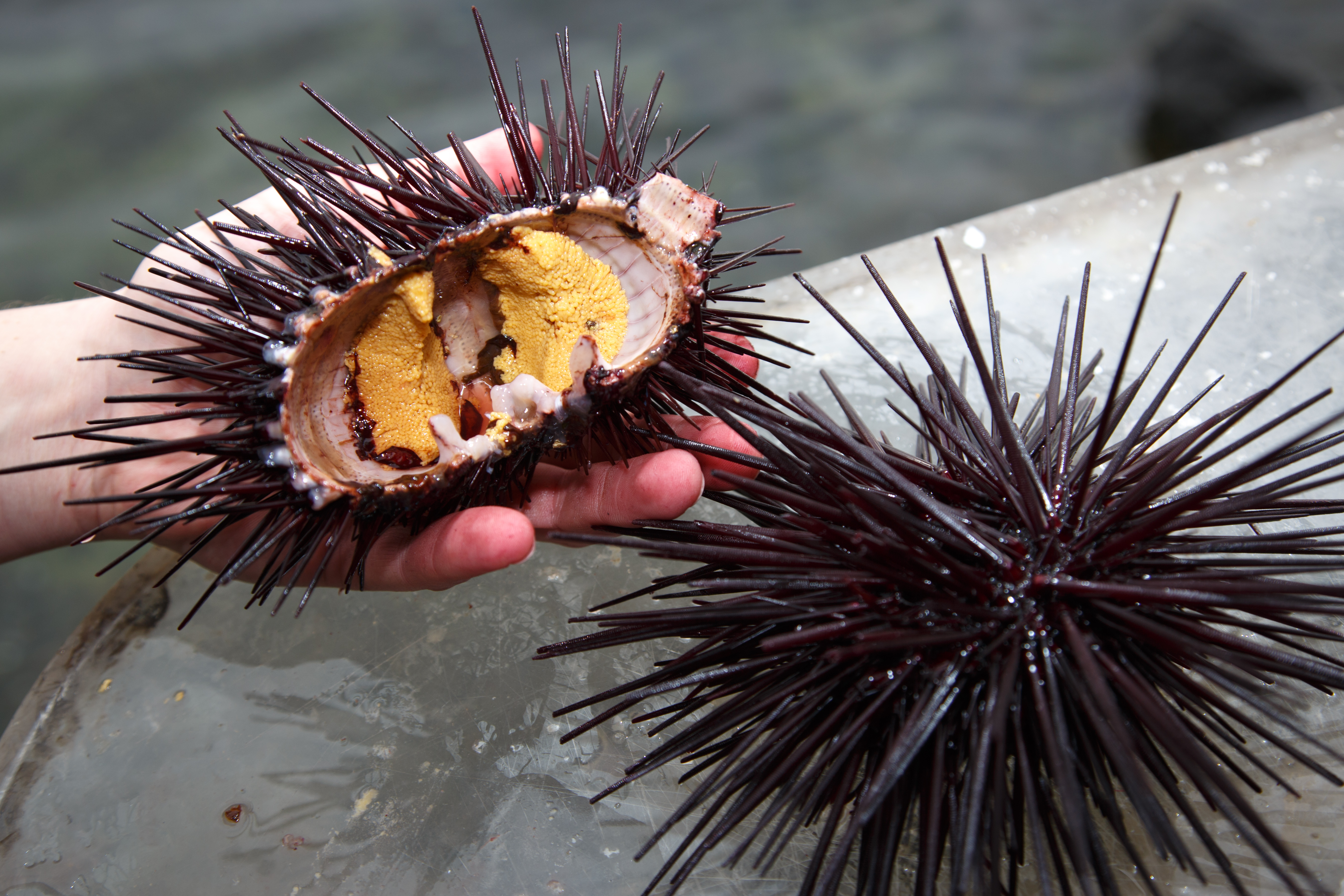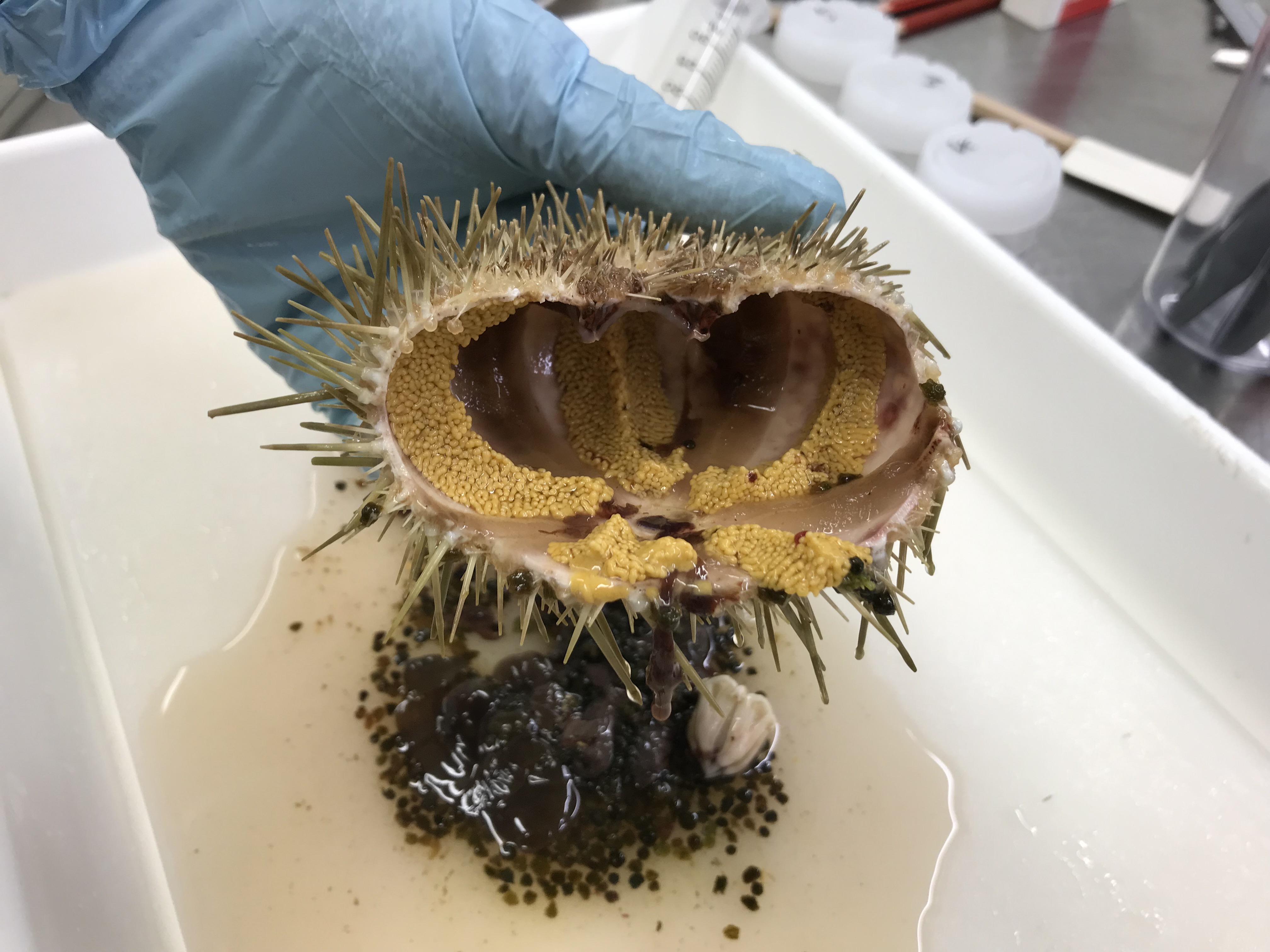
Researchers have determined the likelihood of Tasmanian sea urchins accumulating paralytic shellfish toxins (PST) in their roe during blooms of the microalgae Alexandrium catenella and Gymnodinium catenatum. This new research will help tailor Tasmanian urchin marine biotoxin monitoring and risk management to prevent PST-induced illness in humans and safeguard market access.
Tasmania’s commercial urchin fishery catches and processes roe (gonads) from the native Shortspined Sea Urchin and the range-extending Longspined Sea Urchin for consumption in Australia and overseas. However, recurrent blooms of toxic algae in productive urchin harvest zones have increased the possibility of urchins accumulating PSTs in their roe.
In a conservative measure to control PST risk during investigations, urchin biotoxin risk management currently abides by existing abalone regulations. As a result, the industry has high compliance costs to secure market access, which have inhibited fishery growth during blooms in east coast harvest areas.

“We found considerable evidence both urchin species don’t accumulate high PST levels in their roe during A. catenella blooms, allowing us to conclude a low probability of elevated biotoxin uptake during these events,” IMAS researcher and lead author, Dr Andreas Seger said.
“Regarding G. catenatum, there’s insufficient evidence to be conclusive about urchin biotoxin accumulation as the only urchin sample analysed during a confirmed bloom of this algae species contained low levels of PST.
"Overall, all samples had PST levels that were well below the maximum permissible limit set to protect human consumers from potential toxic effects.”
However, IMAS researcher Dr Alison Turnbull, Program Leader for Fish Health, Biosecurity and Seafood Safety, said while urchins may not have accumulated PSTs during the monitored A. catenella blooms, researchers can’t rule out biotoxin accumulation during extreme A. catenella blooms, or during G. catenatum blooms. This is due to a lack of sampling, meaning more research is needed to fully understand the risks.
“There is now no evidence that says current PST risk management controls are needed to mitigate PST risk in Shortspined and Longspined Sea Urchins during low to moderate A. catenella blooms,” Dr Turnbull said. “However, monitoring during extreme blooms may be appropriate, as few urchin samples have been collected during these events.”
Dr Seger said this research will inform a review of urchin PST control measures.
“This includes considering when control measures are necessary and de-linking urchin testing from PST results in abalone on the east coast,” he said. “Additional sampling will also be required to better understand the risk of PST uptake during G. catenatum blooms.”
The Department of Natural Resources and Environment Tasmania provided funding for this research through the Sustainable Marine Research Collaboration Agreement between the Tasmanian Government and the University of Tasmania, and through the Abalone Industry Reinvestment Fund.
Read more about our latest PST research here.
Images:
Published 23 November 2023